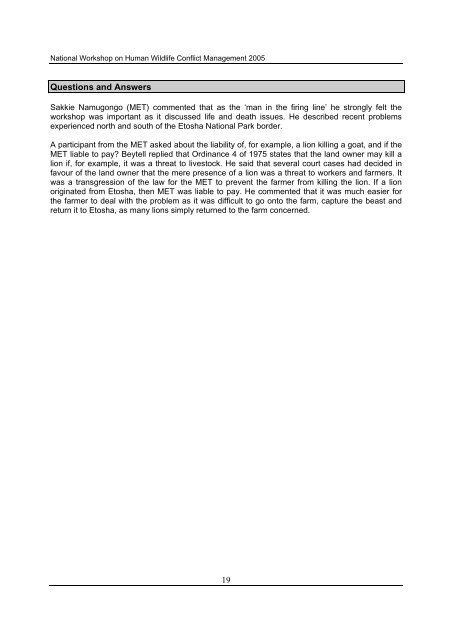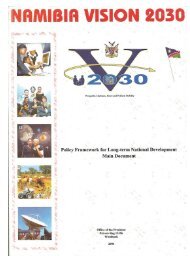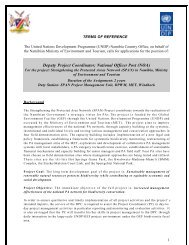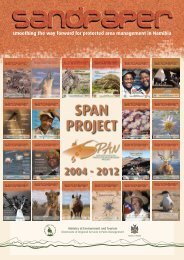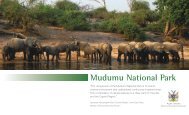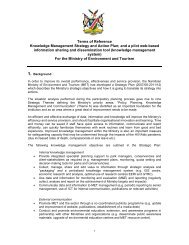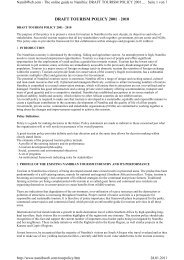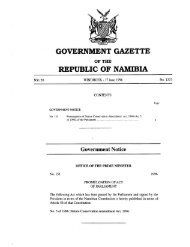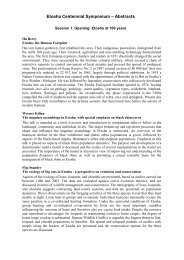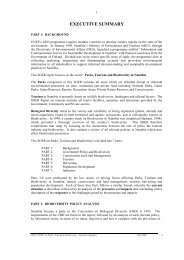HWCM - Ministry of Environment and Tourism
HWCM - Ministry of Environment and Tourism
HWCM - Ministry of Environment and Tourism
You also want an ePaper? Increase the reach of your titles
YUMPU automatically turns print PDFs into web optimized ePapers that Google loves.
National Workshop on Human Wildlife Conflict Management 2005<br />
Questions <strong>and</strong> Answers<br />
Sakkie Namugongo (MET) commented that as the ‘man in the firing line’ he strongly felt the<br />
workshop was important as it discussed life <strong>and</strong> death issues. He described recent problems<br />
experienced north <strong>and</strong> south <strong>of</strong> the Etosha National Park border.<br />
A participant from the MET asked about the liability <strong>of</strong>, for example, a lion killing a goat, <strong>and</strong> if the<br />
MET liable to pay Beytell replied that Ordinance 4 <strong>of</strong> 1975 states that the l<strong>and</strong> owner may kill a<br />
lion if, for example, it was a threat to livestock. He said that several court cases had decided in<br />
favour <strong>of</strong> the l<strong>and</strong> owner that the mere presence <strong>of</strong> a lion was a threat to workers <strong>and</strong> farmers. It<br />
was a transgression <strong>of</strong> the law for the MET to prevent the farmer from killing the lion. If a lion<br />
originated from Etosha, then MET was liable to pay. He commented that it was much easier for<br />
the farmer to deal with the problem as it was difficult to go onto the farm, capture the beast <strong>and</strong><br />
return it to Etosha, as many lions simply returned to the farm concerned.<br />
19


